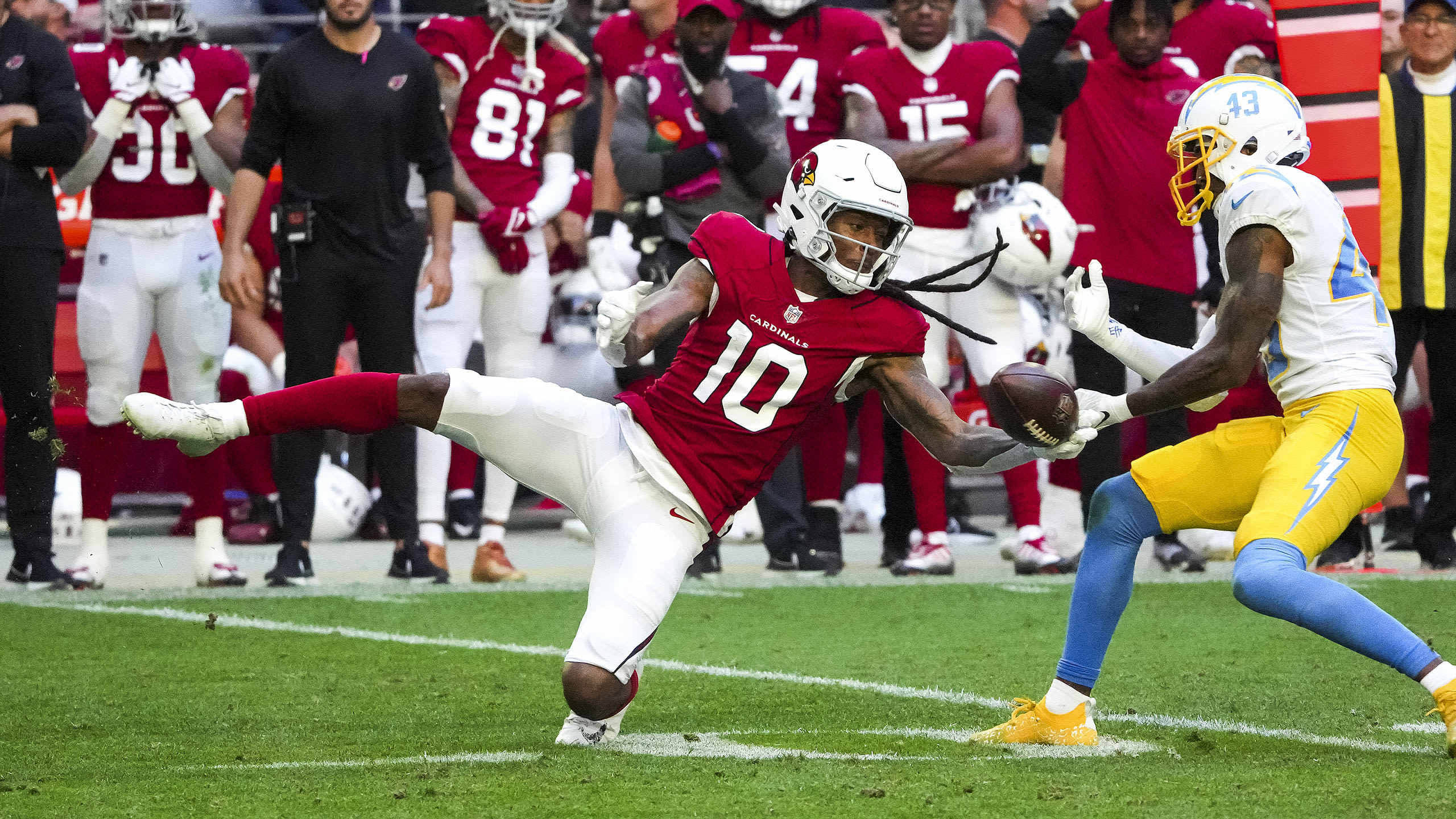BLOG
DeAndre Hopkins’ release by the Cardinals is a result of his contract situation
Hopkins’ tenure as an Arizona Cardinal has come to an unceremonious end following his release on Friday.
In light of all the trade talk this offseason and his recent comments on I Am Athlete about what he wanted out of an organization, in addition to listing quarterbacks other than Kyler Murray who he wanted to play with, it wasn’t a question of if, but when he would leave.
No matter how you spin it, a release is a tough look. Remember, it takes two to tango.
In 2022, Hopkins was likely to play his last game in Arizona.
With former head coach Kliff Kingsbury out, general manager Steve Keim resigning, Murray battling an ACL tear, and a full-blown rebuild on the horizon, a trade made sense.
We saw how Hopkins changed Arizona’s offense for the better when he was available. His 115 catches for 1,407 yards and six touchdowns in his first season in the desert proved just that.
Despite missing eight games last season, Hopkins still led the team in receiving yards (717), receptions (64) and touchdowns (3). The wrench in Arizona’s trade plans for the wideout can be found when you dig deeper into the financials.
In 2024, Hopkins’ base salary will drop to $14.9 million from $19.45 million this season. In the wake of Hopkins’ release Friday, ESPN’s Jeremy Fowler hinted at Hopkins’ refusal to budge on a reworked contract.
As an example, the Buffalo Bills were rumored to be interested in Hopkins, but currently have just under $1.5 million in freed-up cap space. The New England Patriots have around $14.1 million.
It’s all for naught if you can’t stay on the field. You can be a world-beater, but if you can’t stay on the field, it’s nothing. As first-year general manager Monti Ossenfort sought to correct all the wrongs left by the previous regime, he had just one avenue to follow.
No deal for Hopkins stings. There’s no way around it. But take a look at the wide receiver market today.
A fifth- and sixth-rounder was traded for Brandon Cooks this offseason, while Allen Robinson was moved for a seventh-round pick. These moves don’t mean either of these players are on par with Hopkins, but they do illustrate how wary teams are when it comes to selling the farm to add decent pass catchers.
Freeing up cap space is as valuable to a rebuilding Cardinals team as draft capital. This Arizona team is not expected to have a banner year in 2023. If anything, you could say it will be a redshirt season for the Cardinals as they prepare for 2024 and beyond.
Instead of taking a lesser dead-money hit of $11.3 million in each of the next two seasons, why not take on the full burden of the $22.6 million in a year where spending is expected to be light as Arizona attempts to improve its cap space?
There is a possibility that the optics aren’t the best. Also, Arizona has a real chance of coming out of this in a much better financial and roster position, even if it’s down the road.

